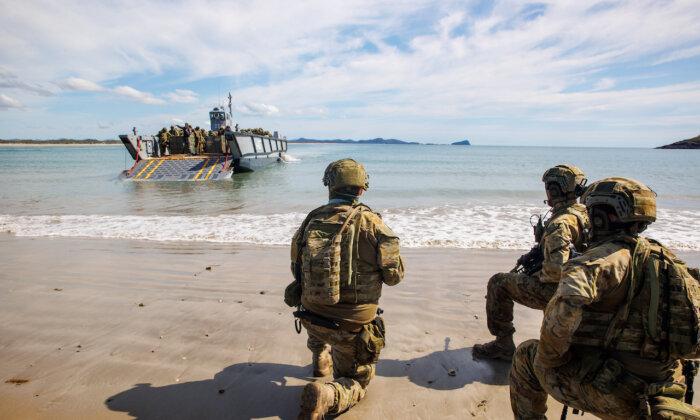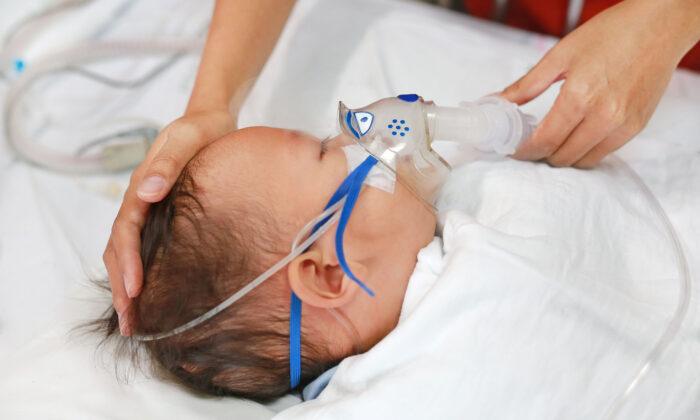The Australian Army will relocate hundreds of infantry troops, tanks, and weaponry to the city of Townsville in northeast Queensland as it prepares to counter a possible future conflict in the Indo-Pacific.
Under the changes, approximately 800 army personnel will be relocated from Adelaide to the three new “littoral lift”—shoreline defence—groups stationed in Townsville, Brisbane, and Darwin.
Most personnel will shift to Townsville, followed by the other two northern cities.
The Townsville-based 3rd Brigade will focus on armoured combat, while the Brisbane-based 7th Brigade will focus on motorised combat.
The Darwin-based 1st Brigade will focus on light combat, while the Adelaide-based 1st Armoured Regiment will be the country’s centre for innovation and experimentation with emerging technologies.
Almost all of the army’s armoured vehicles and half of its aviation capabilities will be stationed in Townsville.
United States landing craft could also be stationed in Australia’s north as the United States helps to fill in capability gaps, U.S. Army Pacific chief of staff Brigadier-General James Bartholomees said in an interview with AAP.
“These changes to the Army are about responding to the recommendations of the Defence Strategic Review to maintain peace, security and prosperity in our region,” Defence Minister Richard Marles said.
“Our Army has always played a vital role in the defence of our nation and will continue to do so as it adapts to the challenges of our times.”
Adelaide Brigade to Control Long-Range Firepower
While army personnel will initially decrease in Adelaide, numbers are expected to later return to current levels as the city’s 10th Brigade is re-raised to host Long-Range Strike and National Advanced Surface-to-Air Missile System capabilities, reported the Australian Broadcasting Corporation.New postings in Adelaide will begin in 2025, in line with the arrival of new artillery and missile systems, and will be home to the country’s long-range strike capabilities.
Meanwhile, personnel numbers in Western Australia, Tasmania, Victoria, and NSW will remain the same.
“There are a lot of tough decisions which need to be made, but in doing so, we are making them in the best interest of our Defence Force and our nation,” Mr. Marles said.
Beijing Threat Central to Australian Defence Strategic Review
The Defence Strategic Review carried out by Defence Force Chief Angus Houston and former Defence Minister Stephen Smith identified Beijing as the main threat to the rules-based order in the Indo-Pacific region.“No longer is our Alliance partner, the United States, the unipolar leader of the Indo-Pacific. Intense China–United States competition is the defining feature of our region and our time,” the report states.
“Major power competition in our region has the potential to threaten our interests, including the potential for conflict. The nature of conflict and threats have also changed.”
Six areas for immediate action were identified under the review, which has been agreed to—some in principle—by the Albanese government.
They include the acquisition of nuclear-powered submarines through AUKUS, the development of the Australian Defence Force’s (ADF’s) ability to strike targets at a longer range, and the local manufacture of munitions.
Other initiatives include improving the ADF’s ability to operate from Australia’s northern bases; improving the growth and retention of highly skilled defence personnel; translating disruptive new technologies into ADF capability; and deepening Australia’s diplomatic and defence partnerships with key partners in the Indo-Pacific.
Mr. Gallagher said the trilateral AUKUS defence pact would integrate Australia into the U.S. missile supply chain and that long-range precision missiles could be forward deployed in the Indo-Pacific.
Forward deployment is a policy used by the United States to maintain a large overseas presence, particularly in the Indo-Pacific, where allies seek to counter an aggressive China.







